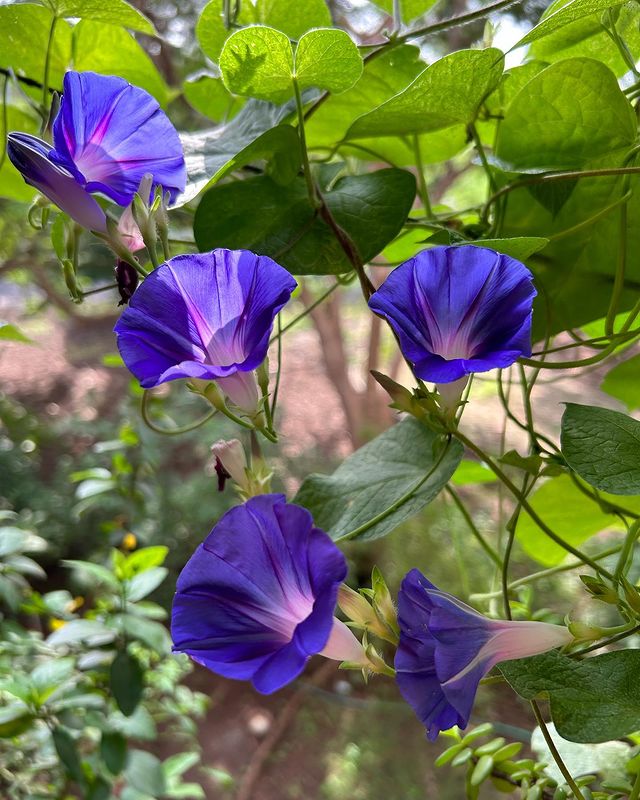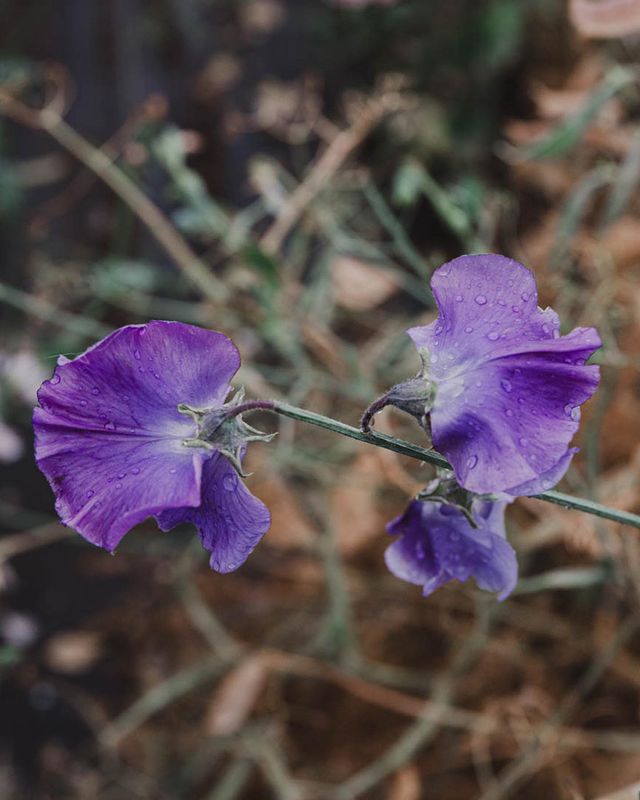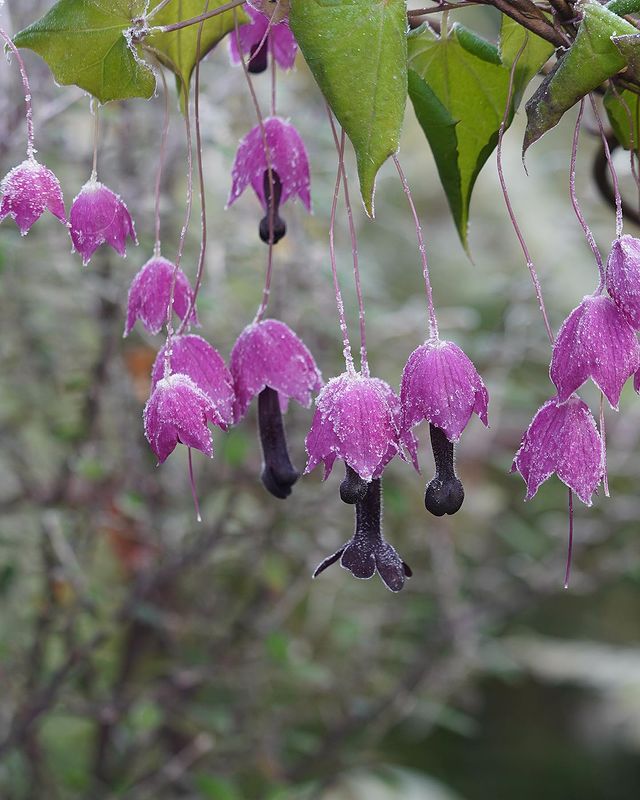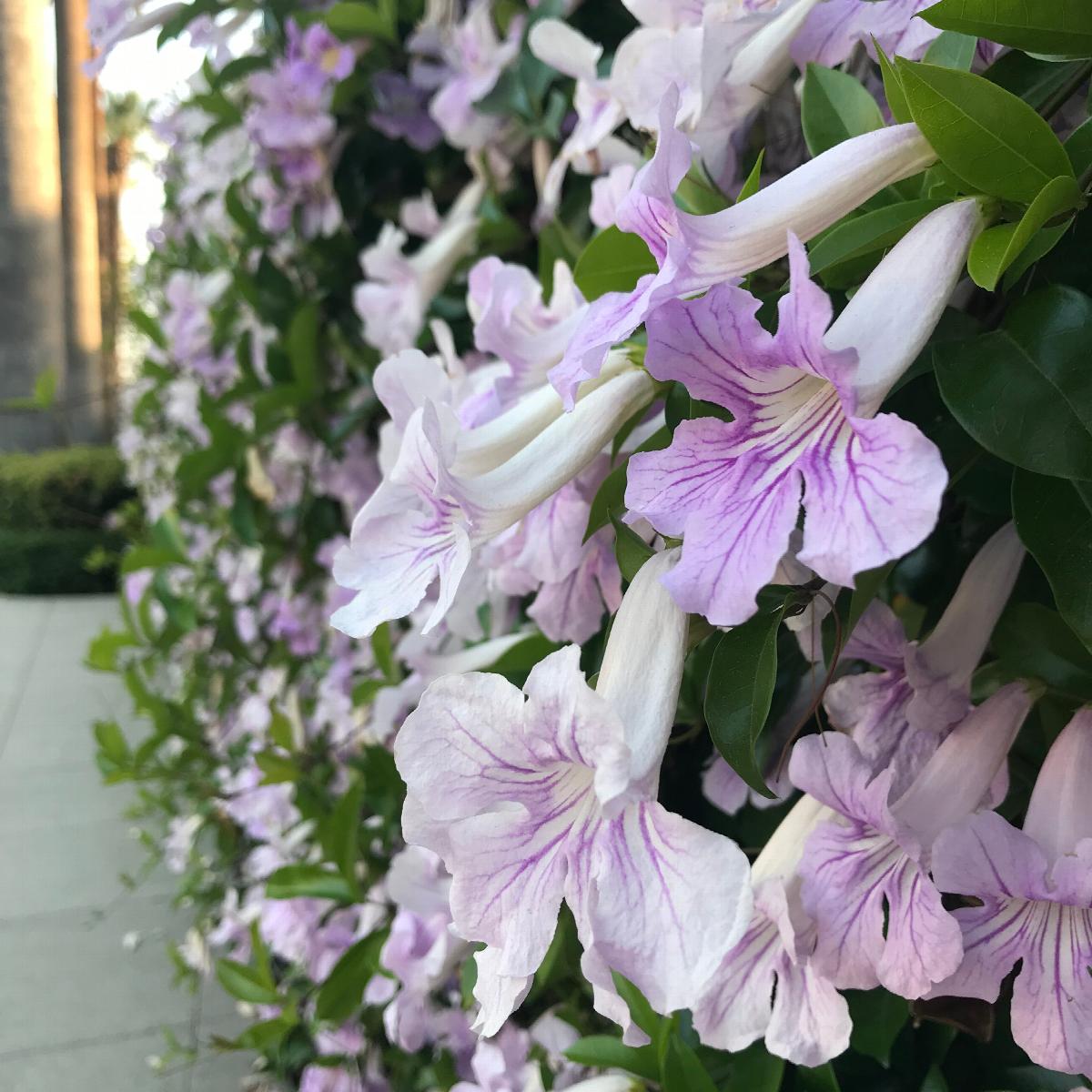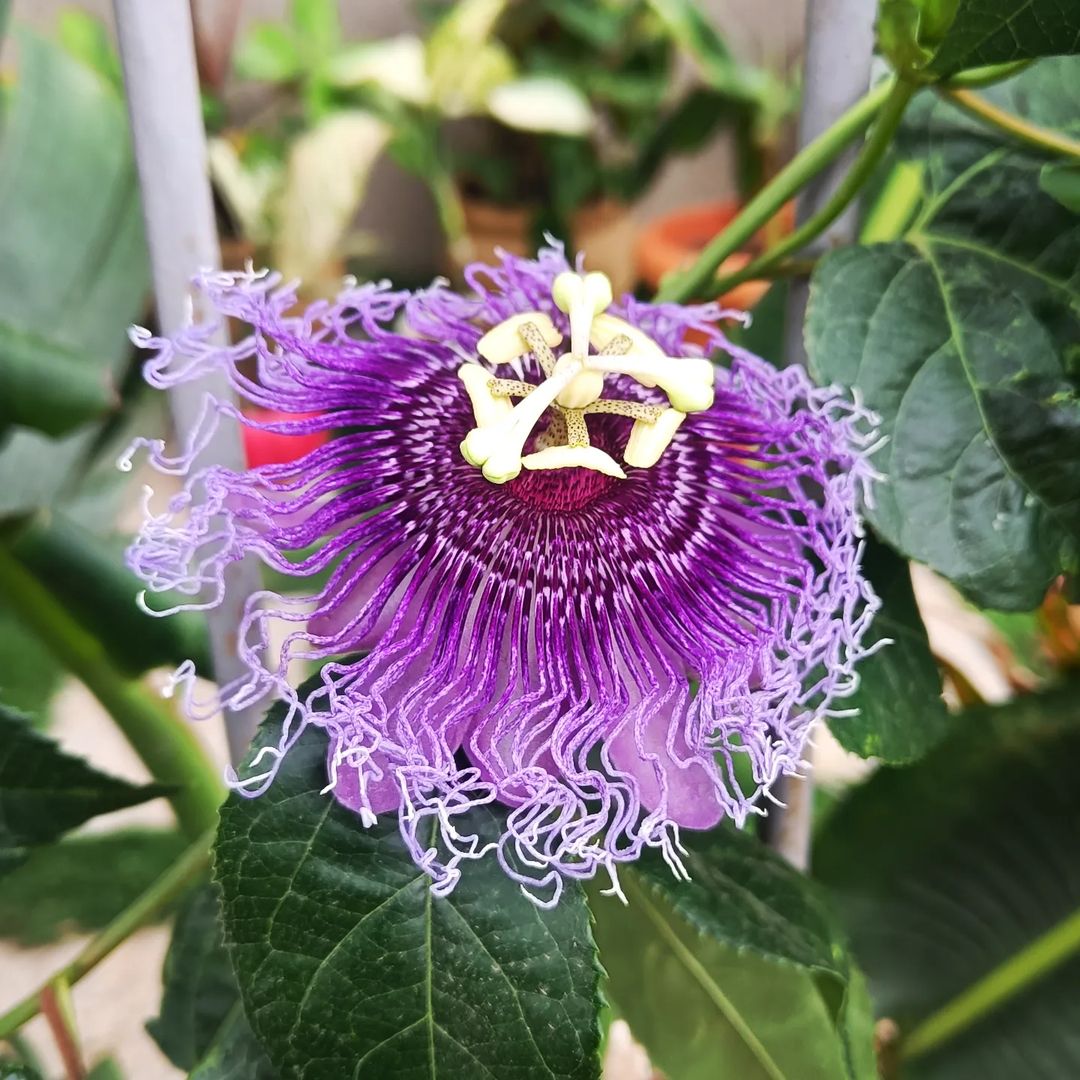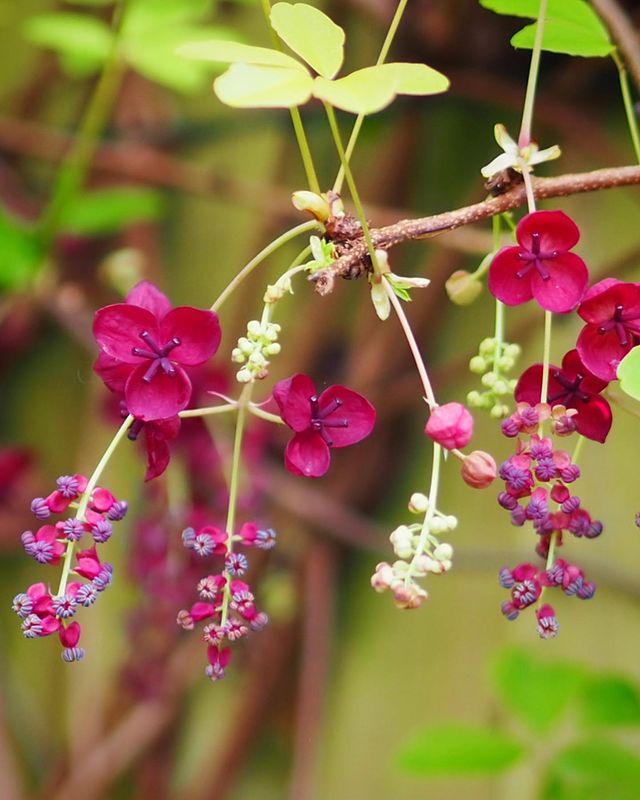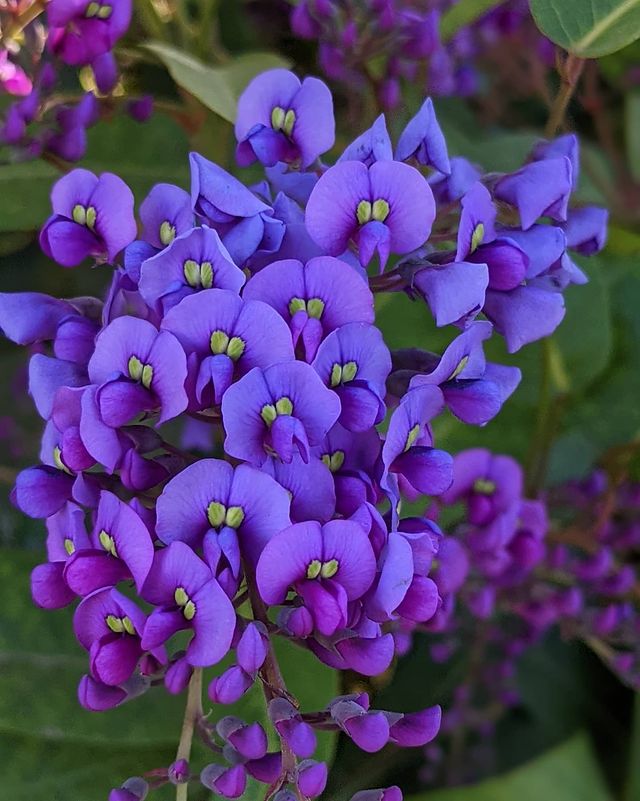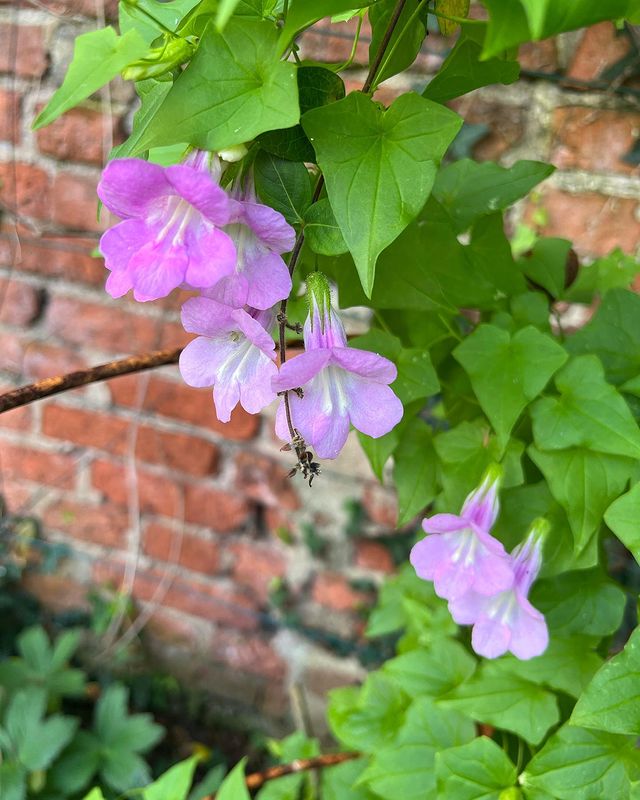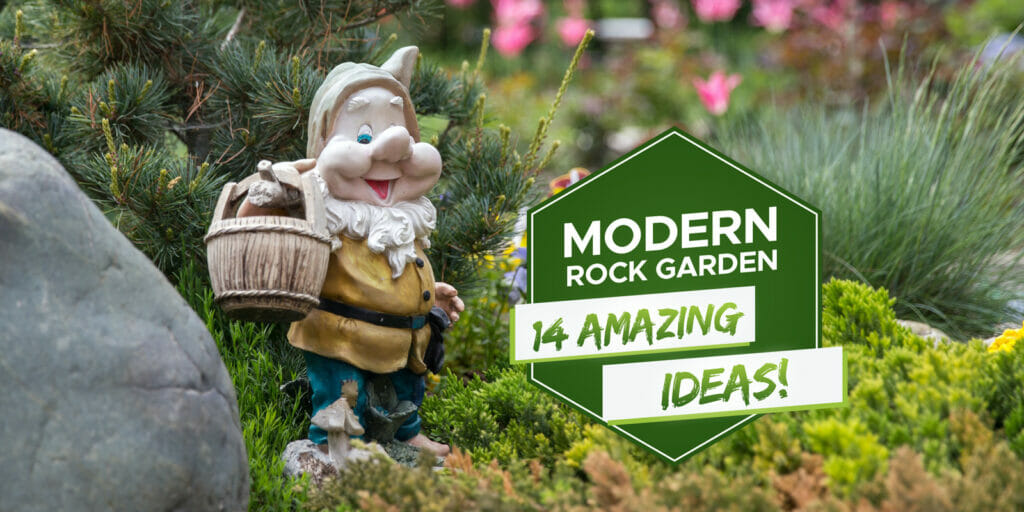As gardening enthusiasts, we always look for beautiful and unique plants to add to our collection.
One of the most stunning types of plants are those with purple flowers, especially when they are climbing vines. In this article, we will introduce you to 12 beautiful vine plants with purple flowers that are sure to add a pop of color and interest to your garden.
Vines are a great addition to any garden, as they can be used to cover unsightly walls or fences, add privacy, or simply add an extra layer of visual interest.
When combined with the striking beauty of purple flowers, these vines become even more captivating.
From the delicate blooms of the purple clematis to the bold and vibrant trumpet-shaped flowers of the purple morning glory, there are a variety of vines with purple flowers to choose from.
Characteristics of Vine Plants with Purple Flowers
As the name suggests, vine plants with purple flowers have blooms that are predominantly purple in color.
However, the shade of purple can vary from plant to plant, ranging from deep, rich hues to lighter, more pastel shades.
Growth Habit
Most vine plants with purple flowers are climbers, using tendrils or other means to attach themselves to structures such as trellises, fences, and walls.
However, there are also some varieties that are more sprawling in nature and can be grown as ground cover.
Blooming Season
The blooming season for vine plants with purple flowers can vary depending on the species, but many of them tend to produce their blooms in the late spring or early summer.
Some varieties may continue to flower throughout the summer months, while others may only bloom for a few weeks.
Size
The size of vine plants with purple flowers can also vary widely depending on the species.
Some may only grow a few feet in length, while others can reach heights of up to 30 feet or more.
Fragrance
While not all vine plants with purple flowers are fragrant, some do produce a pleasant scent that can be enjoyed in the garden.
Some of the most fragrant varieties include jasmine, wisteria, and honeysuckle.
11 Vines With Purple Flowers
When it comes to adding a pop of color to your garden or outdoor space, purple-flowered vines are an excellent choice.
Here are some of the most popular varieties of purple-flowered vines that you can consider planting:
Wisteria
Wisteria is a popular climbing vine that produces clusters of fragrant, purple flowers.
It can grow up to 30 feet long and is known for its beautiful, cascading blooms.
Wisteria is a low-maintenance plant that requires full sun and well-drained soil.
- Type of Vine: Wisteria is a climbing vine celebrated for its stunning cascades of flowers.
- Hardiness Zones: Wisteria varieties are typically suited for USDA hardiness zones 5 to 9, although this can vary depending on the species and variety.
- Sunlight Needs: Wisteria thrives in full sun, which means it requires at least 6 to 8 hours of direct sunlight each day for optimal growth and flowering.
- Soil Requirements: Well-draining soil is essential for wisteria. It prefers fertile soil that is moderately rich in organic matter. Ensure good drainage to prevent waterlogged roots.
- Watering: Wisteria generally needs consistent moisture, especially during the growing season and dry spells. Water deeply when the soil begins to dry out, but avoid overwatering, which can lead to root rot.
Clematis
Clematis is another popular climbing vine that produces beautiful, purple flowers.
It comes in a variety of shades, from light lavender to deep violet.
Clematis requires well-drained soil and plenty of sunlight to thrive.
- Type of Vine: Clematis is a climbing vine known for its beautiful flowers.
- Hardiness Zones: Clematis varieties can vary in hardiness, but many are suitable for USDA hardiness zones 4 to 9.
- Sunlight Needs: Clematis generally prefers full to partial sun. Most varieties thrive in at least 6 hours of sunlight per day.
- Soil Requirements: Well-draining, fertile soil with good moisture retention is ideal for clematis. Adding organic matter can help improve soil quality.
- Watering: Keep the soil consistently moist but not waterlogged, especially during hot and dry periods. Mulching around the base helps retain moisture.
Morning Glory
Morning glory is a fast-growing vine that produces vibrant, trumpet-shaped flowers in shades of purple.
It is an annual plant that requires full sun and well-drained soil.
Morning glory is easy to grow and can quickly cover a trellis or fence.
- Type of Vine: Morning Glory (Ipomoea spp.) is a climbing vine known for its trumpet-shaped flowers that typically bloom in the morning and close by the afternoon.
- Hardiness Zones: Morning Glory is typically grown as an annual but can be perennial in USDA hardiness zones 9 and higher.
- Sunlight Needs: Morning Glory thrives in full sun, requiring at least 6 to 8 hours of direct sunlight daily for optimal growth and abundant flowering.
- Soil Requirements: Well-draining soil is important for Morning Glory. It can adapt to various soil types but prefers moderately fertile, loamy soil.
- Watering: These vines prefer evenly moist soil. Water when the soil begins to dry out, and ensure proper drainage to prevent waterlogged roots.
Sweet Pea
Sweet pea is a fragrant climbing vine that produces clusters of purple flowers.
It requires full sun and well-drained soil to thrive.
Sweet pea is a popular choice for adding color and fragrance to a garden or outdoor space.
- Type of Vine: Sweet Pea is a flowering vine known for its fragrant and colorful blooms.
- Hardiness Zones: Sweet Peas are typically grown as annuals, but they can be perennial in USDA hardiness zones 8 and higher.
- Sunlight Needs: Sweet Peas thrive in full sun to light shade, making them adaptable to various lighting conditions. They benefit from at least 6 hours of sunlight per day.
- Soil Requirements: Well-draining, fertile soil is ideal for Sweet Peas. They prefer slightly alkaline soil but can tolerate a range of soil types.
- Watering: Sweet Peas require consistent moisture. Water deeply when the soil begins to dry out to keep the vines well-hydrated.
Purple Bell Vine
Purple bell vine is a unique climbing vine that produces bell-shaped, purple flowers.
It requires full sun and well-drained soil to thrive.
Purple bell vine is a great choice for adding a touch of whimsy to your garden or outdoor space.
- Type of Vine: Purple Bell Vine, also known as Purple Bellflower Vine, is a climbing vine valued for its distinctive bell-shaped purple flowers.
- Hardiness Zones: Purple Bell Vine is typically grown as an annual but can be perennial in USDA hardiness zones 9 and higher.
- Sunlight Needs: Purple Bell Vine thrives in full sun to partial shade, making it adaptable to a range of light conditions. It benefits from at least 4 to 6 hours of direct sunlight daily.
- Soil Requirements: Well-draining soil is important for Purple Bell Vine. It prefers moderately fertile, loamy soil.
- Watering: These vines require regular watering to keep the soil consistently moist but not waterlogged. Provide supplemental water during dry spells.
DON’T MISS: Weeds with purple flowers.
Violet Trumpet Vine
Violet trumpet vine is a fast-growing vine that produces beautiful, trumpet-shaped flowers in shades of purple.
It requires full sun and well-drained soil to thrive.
Violet trumpet vine is a popular choice for covering a trellis or fence.
- Type of Vine: Violet Trumpet Vine is a climbing vine recognized for its striking violet trumpet-shaped flowers.
- Hardiness Zones: Violet Trumpet Vine is suitable for USDA hardiness zones 8 to 10.
- Sunlight Needs: This vine thrives in full sun, requiring at least 6 to 8 hours of direct sunlight each day for optimal growth and flowering.
- Soil Requirements: Well-draining soil is essential for Violet Trumpet Vine. It prefers fertile, sandy or loamy soil with good drainage.
- Watering: Keep the soil consistently moist, especially during the growing season. Provide regular water to ensure the vine’s well-being.
Purple Passionflower
Purple passionflower is a climbing vine that produces intricate, purple flowers.
It requires full sun and well-drained soil to thrive.
Purple passionflower is a great choice for adding a unique touch to your garden or outdoor space.
- Type of Vine: Purple Passionflower is a climbing vine known for its intricate and colorful flowers, as well as its edible fruit.
- Hardiness Zones: Purple Passionflower is typically hardy in USDA hardiness zones 5 to 9.
- Sunlight Needs: This vine thrives in full sun to partial shade, requiring at least 6 hours of direct sunlight per day for vigorous growth and flowering.
- Soil Requirements: Well-draining soil is crucial for Purple Passionflower. It prefers moderately fertile, loamy soil but can adapt to various soil types.
- Watering: Keep the soil consistently moist but not waterlogged, especially during hot and dry periods. Adequate watering is essential for healthy growth.
Akebia
Akebia is a climbing vine that produces clusters of purple flowers.
It requires full sun and well-drained soil to thrive.
Akebia is a low-maintenance plant that is easy to grow.
- Type of Vine: Akebia, often referred to as Chocolate Vine, is a climbing vine known for its unique purple or chocolate-scented flowers.
- Hardiness Zones: Akebia is typically suitable for USDA hardiness zones 4 to 9, depending on the species and variety.
- Sunlight Needs: This vine adapts well to various light conditions but thrives in partial shade to full sun. It can tolerate some shade.
- Soil Requirements: Well-draining soil is important for Akebia. It prefers fertile, loamy soil but can tolerate a range of soil types.
- Watering: Keep the soil consistently moist, especially during the growing season. Adequate water is crucial for healthy growth.
Hardenbergia
Hardenbergia is a climbing vine that produces clusters of purple flowers.
It requires full sun and well-drained soil to thrive.
Hardenbergia is a great choice for adding color to a garden or outdoor space.
- Type of Vine: Hardenbergia, also known as Australian Sarsaparilla or False Sarsaparilla, is a climbing vine native to Australia and known for its clusters of pea-shaped flowers.
- Hardiness Zones: Hardenbergia is typically hardy in USDA hardiness zones 9 to 11, making it suitable for mild and Mediterranean climates.
- Sunlight Needs: This vine prefers full sun to partial shade, thriving with at least 6 hours of direct sunlight per day.
- Soil Requirements: Well-draining, slightly acidic to neutral soil is ideal for Hardenbergia. It can tolerate a variety of soil types, as long as they offer good drainage.
- Watering: Keep the soil consistently moist but not waterlogged, especially during the growing season. Hardenbergia benefits from regular watering.
Hyacinth Bean Vine
Hyacinth bean vine is a fast-growing vine that produces clusters of purple flowers.
It requires full sun and well-drained soil to thrive.
Hyacinth bean vine is a popular choice for covering a trellis or fence.
- Type of Vine: Hyacinth Bean Vine, also known as Lablab or Purple Hyacinth Bean, is a climbing vine known for its attractive foliage and vibrant purple flowers.
- Hardiness Zones: Hyacinth Bean Vine is typically grown as an annual but can thrive as a perennial in USDA hardiness zones 9 to 11.
- Sunlight Needs: This vine prefers full sun, requiring at least 6 to 8 hours of direct sunlight daily for optimal growth and flowering.
- Soil Requirements: Well-draining soil is crucial for Hyacinth Bean Vine. It prefers fertile, loamy soil with good drainage.
- Watering: Keep the soil consistently moist but not waterlogged, especially during the growing season. Adequate watering is essential for healthy growth.
Climbing Snapdragon
Climbing snapdragon is a climbing vine that produces beautiful, purple flowers.
It requires full sun and well-drained soil to thrive.
Climbing snapdragon is a great choice for adding a pop of color to your garden or outdoor space.
- Type of Vine: Climbing Snapdragon, also known as Creeping Gloxinia, is a climbing vine known for its trumpet-shaped flowers that resemble snapdragons.
- Hardiness Zones: Climbing Snapdragon is typically grown as an annual but can be perennial in USDA hardiness zones 9 to 11.
- Sunlight Needs: This vine thrives in full sun to partial shade, requiring at least 4 to 6 hours of direct sunlight daily for optimal growth and flowering.
- Soil Requirements: Well-draining soil is important for Climbing Snapdragon. It prefers moderately fertile, loamy soil with good drainage.
- Watering: Keep the soil consistently moist but not waterlogged, especially during the growing season. Adequate watering is crucial for healthy growth.
Landscape Design Ideas with Purple Vines
When it comes to landscape design, purple vines can add a touch of elegance and sophistication to any outdoor space. Here are a few ideas on how to incorporate these beautiful plants into your landscape design:
Arbors and Trellises
Arbors and trellises are a popular choice for supporting climbing vines. Purple vines such as the Purple Passionflower or the Purple Bell Vine can create a stunning focal point when grown on an arbor or trellis. These structures provide a vertical element to your landscape design and can add height and depth to your garden.
Wall and Fence Coverings
Purple vines can also be used to cover walls and fences, adding color and texture to your outdoor space. The Clematis ‘Jackmanii’ is a popular choice for wall and fence coverings, with its deep purple flowers and climbing habit. Another option is the Purple Wisteria, which can create a beautiful cascading effect when grown on a wall or fence.
Hanging Baskets and Containers
For those with limited space, hanging baskets and containers are a great option for growing purple vines. The Purple Heart Vine is a popular choice for hanging baskets, with its delicate purple flowers and trailing habit. The Purple Hyacinth Bean is another option for containers, with its vibrant purple flowers and attractive foliage.
Incorporating purple vines into your landscape design can add a touch of beauty and sophistication to your outdoor space. Whether you choose to grow them on an arbor or trellis, cover a wall or fence, or grow them in hanging baskets and containers, these plants are sure to make a statement in your garden.
Seasonal Care for Purple-Flowered Vines
Pruning Times
Proper pruning is essential for the growth and health of purple-flowered vines. We recommend pruning these vines twice a year: once in early spring and again in late summer.
In early spring, we suggest removing any dead, damaged, or diseased wood. We also recommend cutting back any growth that occurred during the winter. This will encourage new growth and help shape the vine for the coming season.
In late summer, we suggest removing any excessive growth that has occurred during the summer months. This will help prevent the vine from becoming too dense and encourage the growth of new flowers.
Winterizing Vines
Winterizing your purple-flowered vines is essential to ensure their survival during the colder months. We suggest taking the following steps to winterize your vines:
- Mulching: Apply a 2-3 inch layer of mulch around the base of the vine. This will help insulate the roots and protect them from freezing temperatures.
- Watering: Water the vine thoroughly before the first frost. This will help ensure that the vine has enough moisture to survive the winter.
- Wrapping: Wrap the vine with burlap or another protective material. This will help protect the vine from harsh winds and freezing temperatures.
By following these simple steps, you can ensure that your purple-flowered vines will thrive and produce beautiful blooms year after year.
Frequently Asked Questions
What are some common types of indoor vines with purple flowers?
Some common types of indoor vines with purple flowers include the Purple Heart Plant, the Wandering Jew, and the Purple Passion Plant. These plants are easy to care for and can add a pop of color to any indoor space.
How do you care for a purple clematis vine?
To care for a purple clematis vine, it’s important to plant it in well-draining soil and in an area that receives full sun or partial shade. Water the plant regularly, but be careful not to overwater it. Prune the plant in the fall or early spring to promote healthy growth and flowering.
Are there any climbing vines with purple flowers that are considered invasive?
Yes, there are some climbing vines with purple flowers that are considered invasive, such as the Purple Loosestrife and the Russian Vine. It’s important to research the plants before planting them in your garden to ensure they won’t become a problem in the future.



